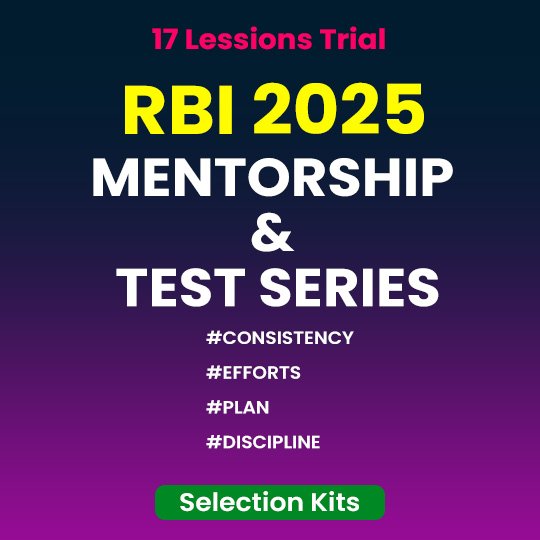Daily Current Affairs Quiz
2 July, 2025
National Affairs
1. RailOne App Launched by Railways
Context:
On July 2, 2025, Railway Minister Ashwini Vaishnaw launched RailOne, a new all-in-one mobile application developed by CRIS (Centre for Railway Information Systems), the IT arm of Indian Railways.
Key Features of the RailOne App
RailOne is a comprehensive, all-in-one platform integrating a variety of services in a single app:
- Unreserved Ticketing System (UTS) via R-Wallet with 3% discount
- Live train tracking
- Grievance redressal portal
- E-catering, porter booking, and last-mile taxi services
- Single-sign-on using mPIN or biometric
- Integration with existing RailConnect and UTS credentials
- No need for multiple railway apps – saves space and improves user experience
Technologies
- The modernised Passenger Reservation System (PRS) is being upgraded to:
- Support multilingual, agile, and scalable operations
- Handle 1.5 lakh bookings per minute
- Manage 40 lakh enquiries per minute
2. Employment-Linked Incentive (ELI) Scheme
Context:
The Union Cabinet has approved a major employment incentive scheme titled Employment-Linked Incentive (ELI) with a total outlay of ₹99,446 crore, aimed at boosting job creation, especially in the manufacturing sector.
Key Features
- Objective: Encourage formal job creation by providing financial incentives to employers and first-time employees.
- Target: Creation of 3.5 crore jobs over two years (August 1, 2025 – July 31, 2027).
- Of these, 1.92 crore are projected to be first-time job entrants.
- Eligibility:
- Employees earning up to ₹1 lakh/month.
- Additional employees retained in jobs for at least six months.
- Incentive Structure:
- First-time employees to receive one month’s wage (up to ₹15,000).
- Employers to get incentives of up to ₹3,000 per month for each new job, for a two-year period.
- For jobs in the manufacturing sector, incentives extend to the third and fourth years.
Banking/Finance
1. RBI’s New Project Finance Norms
Context:
The Reserve Bank of India (RBI), on June 19, 2025, released its final guidelines on project finance provisioning, increasing general provisions for loans extended during the construction phase. The new norms will take effect from October 1, 2025, and will apply only to new projects.
What is RBI’s New Project Finance Norms?
RBI’s new project finance norms, effective October 1, 2025, aim to streamline lending to infrastructure and other projects by banks and NBFCs, promoting stability and growth. The revised framework introduces a principle-based approach for resolving stress in project finance, allows flexibility in extending the date of commencement of commercial operations (DCCO), and reduces provisioning requirements during the construction phase.
Key Norms
- Commercial Real Estate (CRE) projects: 1.25% general provision
- Commercial Real Estate – Residential Housing (CRERH): 1.0%
- All other projects: 1.0% during the construction phase
- Applies uniformly to projects, including those by MSMEs and small residential housing developers
Concerns Raised
- Blanket Provisioning Irrespective of Risk
- Crisil Ratings and banking officials criticized the uniform approach, noting that the norms are not linked to individual project credit risk, unlike existing capital requirements for corporate lending which are aligned to credit ratings.
- This delinking disregards the diverse risk profiles across sectors and projects.
- Impact on Smaller Players
- MSMEs and small-scale housing projects will be disproportionately impacted.
- Bankers argue this could discourage lending to productive sectors that are vital for inclusive growth.
- Higher Cost of Infrastructure Finance
- Increased provisioning means higher capital cost for banks, who in turn may pass this cost to borrowers, making infrastructure financing more expensive.
- Sector-Agnostic Norms
- Critics say that diverse sectors with differing risk levels and loss-given-defaults should not be treated uniformly under the same provisioning requirement.
2. Saraswat Bank Seeks RBI Nod to Merge New India Cooperative Bank
Context:
Saraswat Cooperative Bank has formally approached the Reserve Bank of India (RBI) seeking approval to merge the troubled New India Cooperative Bank (NICB) with itself, provided both institutions receive shareholder approval. The move aims to rescue NICB, which is facing financial distress and regulatory restrictions.
Background on NICB’s Crisis
- In February 2025, RBI imposed severe restrictions on NICB:
- Barred from issuing fresh loans.
- Withdrawals were capped at ₹25,000 per depositor.
- RBI superseded the board and appointed an administrator.
- The trigger: allegations of fund misappropriation and negative net worth.
- As of FY25, NICB’s net worth is negative ₹102.74 crore.
Saraswat Bank’s Proposal
- Saraswat aims to:
- Take over assets and liabilities of NICB.
- Protect depositor interests.
- Consider issuing shares to NICB shareholders in a restricted manner (excluding those involved in fraud).
3. RBI’s Role in Bank Mergers and Amalgamations
Context:
The Reserve Bank of India (RBI) plays a central role in regulating and approving mergers, ensuring systemic stability, depositor protection, and adherence to financial norms under the Banking Regulation Act, 1949, particularly Section 44A.
Key Highlights:
- Regulatory Oversight
- RBI supervises the entire lifecycle of a bank merger — from proposal to post-merger integration.
- Ensures alignment with national financial stability and banking sector consolidation goals.
- Approval Process
- Mergers require RBI’s prior approval.
- RBI evaluates:
- Financial and operational health of merging entities
- Capital adequacy and governance structure
- Impact on depositors and creditors
- Strategic relevance and risk factors
- Shareholder Approval
- As per Section 44A, approval from:
- Two-thirds majority of shareholders (either in person or proxy) of both transferor and transferee banks is mandatory for the scheme of amalgamation.
- As per Section 44A, approval from:
- Lending Business Overlaps
- RBI discourages overlapping businesses between:
- Banks and NBFC subsidiaries
- Banks and fintech platforms
- Aims to preserve credit discipline and reduce conflict of interest.
- RBI discourages overlapping businesses between:
- Cross-Border Mergers
- RBI’s FEMA regulations govern cases involving foreign banks or international mergers.
- Requires:
- No contravention of foreign exchange laws
- Adequate disclosures and due diligence
- RBI and government clearance
4. NBFC Credit Growth Slows Despite RBI Support
Context:
Bank lending to non-banking financial companies (NBFCs) has continued to decline, despite the RBI’s rollback of stricter risk-weight norms in April 2025. The sector is facing cautious bank sentiment, growing reliance on bond markets, and delinquencies in microfinance and unsecured loan segments.
Sectoral Challenges
Stress in Key Loan Segments
- Microfinance institutions (MFIs) and fintech business loans have seen a rise in delinquencies.
- This has made banks more cautious about lending to NBFCs.
- Unsecured personal and business loans are under close scrutiny.
Slow Transmission of Policy Rates
- Despite a 50-bps repo rate cut in April, many banks (especially PSBs) have not cut MCLR, limiting benefit to NBFCs.
- Private banks have begun to pass on rate cuts.
Funding Pressure on Lower-Rated NBFCs
- NBFCs rated A- to BBB are the worst hit, as they largely depend on banks and large NBFCs for funding.
- These NBFCs are seeing slower disbursements and higher costs.
5. Financial Conditions Index (FCI)
Why in News?
The Reserve Bank of India’s (RBI) June 2025 Financial Stability Report presents a positive outlook on India’s financial system, noting that financial conditions have eased, aided by accommodative monetary policy. However, assessing financial conditions remains complex due to the interplay of multiple variables.
What is the Financial Conditions Index (FCI)?
The RBI’s June bulletin proposed an experimental Financial Conditions Index (FCI) to better track the overall state of financial markets at high frequency. While not yet an official tool, it reflects RBI’s interest in building a composite gauge for financial market conditions.
Structure of the Proposed FCI
The proposed FCI includes 20 indicators from five key financial market segments:
- Money Market – tracks the spread of the weighted average call rate over the repo rate.
- Government Securities (G-Secs)
- Corporate Bond Market
- Foreign Exchange Market
- Equity Market – uses Sensex, though a broader index like Nifty may be more representative.
These segments are chosen for their direct link to monetary policy transmission and systemic stability.
Why FCI Matters
- An FCI can serve as a composite barometer of how financial markets are responding to economic conditions and policy changes.
- It could offer early warning signals on stress or overheating in financial markets.
- Particularly useful since monetary policy acts with time lags and markets can shift quickly.
6. AI in Indian Banking
Context:
The banking experience in India is undergoing a rapid and intelligent transformation. From account upgrades to auto loan closures, what once took days is now being completed in minutes — thanks to Artificial Intelligence (AI).
Key Areas of AI Adoption in Banking
- Customer-Facing Transformation
- Chatbots and voice bots handle real-time queries (WhatsApp, email, SMS).
- Used by HDFC, Axis, Federal, Yes Bank, Barclays for multilingual and personalised support.
- Operational Automation
- Tasks like NOCs, credit memos, KYC now done in minutes (was days).
- GenAI can finish credit assessments in ~10 minutes.
- AI scans and summarises PDFs and documents.
- Hyper-Personalisation & Predictive Banking
- AI predicts user needs (e.g., rent reminders, EMI alerts).
- Shift towards natural language, app-free interfaces.
- Internal Productivity Tools
- Barclays uses Microsoft Copilot and GitLab Duo for drafting and coding.
- Axis Bank’s GenAI tool (ADI) supports over 100,000 staff.
AI Infrastructure and Regulatory Oversight
- Around 65–70% of BFSI IT budgets now touch AI, either through fraud analytics, data streaming, or workflow automation.
- Infrastructure providers like Microsoft Azure, AWS, and Google Cloud are building the GenAI backbone for banks.
- To ensure ethical deployment, RBI has formed FREE-AI (Framework for Responsible and Ethical Enablement of AI), led by IIT Bombay, to set guardrails for AI usage in banking.
Key Benefits & Current Limitations
Benefits
- Efficiency Gains: Operational efficiency improved by 15–20%, according to EY.
- Faster Turnaround: Up to 60% reduction in query handling time (e.g., at SBI).
- Improved Customer Engagement: Better personalisation, reduced call wait times, and faster dispute resolutions.
Challenges
- Accuracy risks in mission-critical functions like lending and fraud detection.
- Explainability and auditability remain crucial due to high regulatory sensitivity.
- Budget constraints: Most banks are still investing cautiously (₹5–10 crore range), focusing on low-risk, high-impact use cases.
7. Slice Launches India’s First UPI-Based Credit Card and UPI-Focused Bank Branch
Context:
Fintech startup Slice has launched a new UPI-powered credit card, called the Slice Super Card, along with India’s first physical UPI-centric bank branch and ATM in Bengaluru. The initiative aims to revolutionize how Indians access and use credit through digital platforms.
Key Features of the Slice Super Card
- No joining or annual fees.
- Offers UPI-based credit payments—users can pay by scanning QR codes or making UPI transactions directly from a pre-approved credit line.
- “Slice in 3” feature: lets users split payments into three interest-free installments.
- The card integrates digital credit with India’s most used payment system—UPI, enabling seamless offline and online purchases.
India’s First UPI-Focused Bank Branch & ATM
- Location: Koramangala, Bengaluru
- Facilities include:
- Instant online onboarding
- Kiosk-based account opening
- Cash deposit and withdrawal via UPI-enabled ATM
- 24×7 automated customer support
- A digitally self-service banking experience
This marks a significant shift in traditional banking infrastructure toward cashless and frictionless digital banking, focused on ease and inclusion.
Objective: Financial Inclusion Through UPI Credit
- Although 200+ million Indians use digital payments, access to formal credit remains limited.
- Slice, now merged with North East Small Finance Bank, operates as a full-stack bank, controlling its own infrastructure and licenses to serve broader credit needs.
- Goal: Deliver real-time credit at point-of-sale using mobile and UPI, especially to underserved customers and merchants.
8. AU Small Finance Bank Partners with LIC to Boost Life Insurance Access
Context:
On July 2, 2025, AU Small Finance Bank (AU SFB) entered into a strategic partnership with the Life Insurance Corporation of India (LIC) to expand life insurance distribution across rural and semi-urban India.
Key Highlights
- Objective: Supports India’s vision of ‘Insurance for All by 2047’ by improving life insurance penetration in underserved regions.
- Product Offerings: AU SFB will distribute LIC’s full suite of life insurance products, including:
- Term Insurance
- Endowment Plans
- Whole Life Policies
- Pension and Annuity Plans
- Child-specific Insurance Plans
- Strategic Significance:
- Enhances AU SFB’s transition into a full-spectrum financial services provider, integrating banking, protection, and long-term financial planning.
- Enables LIC to tap into AU’s strong rural presence and customer-centric model for deeper market penetration.
About AU Small Finance Bank (AU SFB)
- Founded: 1996 by Sanjay Agarwal
- Status: Largest Small Finance Bank (SFB) in India
- Type: Scheduled Commercial Bank
- MD & CEO: Sanjay Agarwal
- Customer Base (as of March 31, 2025): Over 1.13 crore
9. SEBI Proposes New IT Capacity Guidelines for Commodity Exchanges and Clearing Corporations
Context:
The Securities and Exchange Board of India (SEBI) has released a draft proposal to revise the IT capacity planning norms for commodity exchanges and clearing corporations, aiming for a more efficient and realistic approach in managing technological infrastructure.
Key Highlights of the Proposal
IT System Capacity Norms
- New Requirement: Maintain IT capacity at 2 times the projected peak load.
- Previous Norm (2016): Required 4 times the peak load but applied only to exchanges.
- Current Proposal: Now extends to clearing corporations as well, ensuring uniformity.
Planning and Monitoring Mechanism
- Forward-looking capacity planning mandated.
- Quarterly stress testing to assess real-time preparedness.
- Real-time automated alert systems must be deployed to detect high utilization.
Utilisation Threshold
- If utilisation exceeds 75% of installed IT capacity:
- Immediate corrective action is required.
- Aimed at avoiding disruptions and ensuring operational resilience.
Scope of the Framework
- Applies to:
- Hardware systems
- Software systems
- Third-party vendor platforms
Agriculture
1. Government to Develop ‘Co-operative Stack’ Through PACS for Rural Scheme Delivery
Context:
In a move akin to the Agri Stack initiative, the Government of India is developing a “Co-operative Stack” to streamline rural scheme delivery via Primary Agricultural Credit Societies (PACS). This is part of a broader effort to digitise and strengthen the rural cooperative ecosystem.
What is the Co-operative Stack?
- A technology-driven, integrated platform that connects government schemes with PACS to deliver unified, transparent, and efficient services in rural areas.
- It is being built on the model of Agri Stack, which consolidates farmer data, including land records, crop details, and government scheme usage.
Key Developments
Use of Emerging Technologies
- Integration of AI-based solutions such as automated weather advisories to support farm-level decisions.
- Improved transparency, accountability, and service efficiency post-digitisation.
Institutional Shift
- The Co-operative Stack intends to replace fragmented rural delivery mechanisms (like SHGs and FPOs) with PACS as the central node for service delivery.
- The Reserve Bank of India previously restricted PACS activity due to lack of transparency — an issue now being addressed through digitisation.
What is Primary Agricultural Credit Societies (PACS)?
Facts To Remember
1. SBI celebrates 70th foundation day, felicitates students
State Bank of India celebrated its 70th foundation day on Tuesday and felicitated 18 children of its staff for their exemplary academic performance and selection into prestigious institutions and organisations.
2. INS Tamal, the last of foreign-built Navy ships, commissioned
The Indian Navy on Tuesday commissioned INS Tamal (F71), a multi-role stealth, guided missile frigate, at the Yantar Shipyard in Kaliningrad, Russia.
3. INS Udaygiri Delivered: Boost to India’s Naval Power & Indigenous Shipbuilding
Project 17A is a successor to the earlier Project 17 (Shivalik-class) and reflects India’s growing capability in indigenous warship design and manufacturing. The Indian Navy received INS Udaygiri, the second stealth frigate under the advanced Project 17A on July 2, 2025.
4. SEBI appoints Sunil Jayawant Kadam as Executive Director
Sunil Jayawant Kadam has been appointed as the Executive Director of the Securities and Exchange Board of India (SEBI), the regulator said in a statement.
5. Kesavan Ramachandran is new RBI executive director
The Reserve Bank of India has appointed Kesavan Ramachandran as the Executive Director with effect from July 1, 2025, according to a statement.
6. MGNREGA work demand increased by 4.5%
Households demanding work under Mahatma Gandhi National Rural Employment Guarantee Scheme (MGNREGS) sawa 4.5 per cent jump in June, when compared to the same month last year. Around 27.59 million households had sought work under the scheme in June this year, while the number was 26.39 million in June 2024, data sourced from the website.















